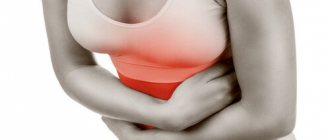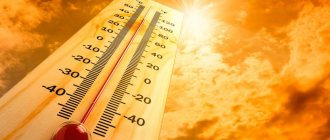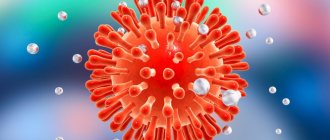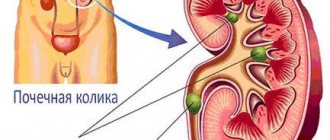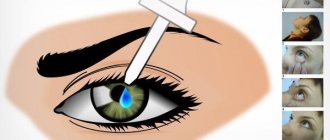General information
Chills are a clinical manifestation of the reaction of enhanced thermogenesis, manifested by a subjective feeling of cold and acutely occurring transient trembling of the muscles of the shoulder girdle, limbs, back, masticatory muscles and spasm of the skin muscle fibers with raising of hairs and goosebumps (the “goose bumps” phenomenon caused by excitation of the n.vagus ).
Mild manifestations of chills are often called chills/chills. Chills, in fact, are a protective evolutionarily developed mechanism in the body, aimed at increasing heat production in the body. It is characteristic of a number of conditions in which heat production can either predominate over heat transfer (febrile states) or be insufficient relative to heat transfer (hypothermia).
Most often, chills occur with the development of a febrile reaction of infectious/non-infectious origin (in infectious, allergic, autoimmune processes, with parenteral introduction into the body of various pyrogenic substances - mucopolysaccharide complexes, foreign proteins, drugs) during treatment of the patient, during hypothermia, in stressful situations , changes in hormonal levels, etc. The sensation of a subjective feeling of chills is caused directly by a decrease in the temperature of the skin and irritation of cold thermoreceptors, signals from which are sent to the integrative thermoregulation center (hypothalamus).
Chills are based on the activation of mechanisms of contractile thermogenesis , limiting heat loss due to a specialized form of muscle activity - muscle yeast (involuntary volley contractions of different muscle groups) and narrowing (spasm) of the peripheral vessels of the skin with a decrease in the flow of warm blood, which helps to reduce the temperature of the skin and sweating. Incoming signals to the structures of the cerebral cortex form appropriate behavior - wrapping up, taking the appropriate pose.
Prevention to prevent sudden severe chills without fever
We remind you that the recommended follow-up actions from us can only be performed by a healthy person. Who was simply overcooled and stressed.
Chills are influenced by many provoking factors, but by taking care of yourself, you can eliminate them.
What should I do?
- Start to gradually harden. Do this competently and in good general condition. You shouldn’t pour ice water on yourself at -40 if you’ve never done this before.
- Run. When running, the walls of blood vessels narrow. Thus, internal training of the cardiovascular system occurs, which strengthens its functioning.
- Try to avoid stress. Stress has a negative effect on everything; by minimizing its impact, you will not be subject to destruction of nerve cells.
- To refuse from bad habits. Smoking and alcohol are toxins that have a terrible effect on the overall functioning of organs; you should not get carried away with this so as not to cause various diseases.
- Undergo routine examinations with all doctors. This way you will protect yourself not only from chills, but also from many diseases.
Be calmer and more confident . Monitor your condition and contact doctors on time. Don’t cause unnecessary panic, but learn to find out the reasons and eradicate them! Be healthy and happy!
- Avia.pro: Russia can help Syria with the destruction of the F-35 fighter in the event of a new Israeli attack
- What do we know about the biography of Naila Asker-zade
- What will happen if Japan decides to seize the southern Kuril Islands by force
- Why does my voice shrink? Hoarseness can be a sign of serious illness
- Professor Igor Gundarov: The effectiveness of the vaccine is the main question
- The richest ballerina in Russia may be the daughter of Igor Shuvalov
Become a member of the CLAN and every Tuesday you will receive the latest issue of “Arguments of the Week” with a discount of more than 70%, along with exclusive materials not included in the newspaper. Get premium access to a library of the most interesting and popular books, as well as an archive of more than 700 published issues for FREE. In addition, you will have the opportunity to benefit from free legal advice from our experts for a whole year.
- Enter your email address, then select any convenient payment method for your annual subscription
- Scan the QR. In the Sberbank Online application that opens, enter the annual subscription cost (490 rubles). Then send the confirmation code by email
Or
Pathogenesis
The pathogenesis of chills in various diseases and in hypothermia is similar. It is based on a typical adaptive reaction of enhanced thermogenesis, which is aimed at increasing the temperature in the internal environment of the body by increasing heat production and reducing heat transfer to the external environment. An increase in heat production occurs due to frequent contractions of the fibers of individual groups of skeletal muscles, which is responsible for the appearance of tremors. In parallel, a general constriction of the blood vessels of the skin occurs, which leads to a sharp decrease, reduction/cessation of the sweating process, which significantly reduces heat transfer and subjectively causes a feeling of chilliness. The process of shivering thermogenesis and the vasomotor response are part of the thermoregulation mechanism.
Diagram of the thermoregulation mechanism
Chills are characteristic of the first febrile stage, accompanied by a rapid/gradual rise in body temperature. It is preceded by specific changes in the nerve centers that contribute to an increase in the “set point” in the thermoregulatory center, which is expressed by a change in the threshold of sensitivity of the neurons of the hypothalamus/thermoregulatory structures of the medulla oblongata to the afferent temperature (cold/heat) signals arriving to them. Accordingly, the above brain structures perceive normal temperature as low.
Signals from thermoregulatory structures, transmitted through the sympathetic nervous system and neurotransmitters, cause a narrowing (spasm) of the peripheral vessels of the skin/mucous membranes, which leads to inhibition of the process of sweating/evaporation and, as a consequence, to a sharp limitation of heat transfer and a decrease in skin temperature by several degrees. As a result, signals from peripheral thermoreceptors are perceived as “cooling”, which turns on the mechanisms of thermoregulation to increase body temperature, namely, the activation of the processes of contractile thermogenesis - a reflexively occurring tremor (contractions of individual groups of skeletal muscles).
There is trembling, a subjective feeling of cold - chills, coldness and pallor of the skin are noted, and “goose bumps” appear. Chills stop as the temperature rises - blood flow in the skin increases, muscle tremors stop, and heat exchange in the body is established at a higher level.
Signs of chills at fever
Chills during fever are often accompanied by a sharp spasm of peripheral, in particular skin, vessels, but blood pressure does not increase. This condition is accompanied by three main symptoms1.6.
- Feeling cold
. When the temperature rises and chills, the patient freezes, even if he is warmly dressed and is in a heated room. - Trembling in the body
. When a person is shivering, all his muscles begin to contract frequently. This is a reflex reaction. - The appearance of goose bumps
. Often, a sign of chills at a temperature becomes small pimples on the surface of the body - goosebumps. They appear due to contraction of the muscles around the hair follicles.
Often, with flu and colds, not only an increase in temperature and fever are observed. To these symptoms are added muscle pain, weakness, headache - signs of intoxication of the body2,5.
Up to contents
Causes of chills
Chills occur both in physiological conditions in the body and are part of a symptom complex of a number of pathological conditions and diseases. The most common causes of chills are febrile conditions, which accompany a number of infectious and non-infectious diseases. Most often, chills with fever occur with colds, acute respiratory viral infections, and influenza , which are characterized by an acute onset, including complaints of “chills, temperature 38 and aching bones.” as pyrogens (substances that cause fever); non-infectious origin - proteins, fats, steroid substances, nucleic acids.
Fever can also accompany diseases of the upper respiratory tract, pulmonary, genitourinary, musculoskeletal systems, skin, etc. It is precisely such diseases that occur in a chronic form that cause constant body chills. And the constant nature of chills is explained by a periodic increase in body temperature in accordance with the type of temperature curve for a particular disease. In some diseases, in particular rheumatism, chills do not appear immediately, but over time. Also, chills may appear over time with malaria , typhoid fever , leptospirosis , ornithosis , etc., and the period of appearance of fever with chills is determined by the development cycle of the pathogen in the body and the timing of the occurrence of organ lesions.
Causes of chills without fever
There are many conditions that can cause chills without fever:
- Hypothermia. It is observed when a person is in unfavorable weather conditions (low temperature, cold rain, strong wind). Chilling is an adaptive reaction of the body in conditions of hypothermia and is aimed at maximizing the reduction in heat loss and increasing heat production. Especially often, when hypothermia occurs, a child develops chills.
- Psycho-emotional disorders (stress, fear, panic attacks, social phobia, etc.). Negative psycho-emotional situations provoke an increased release of catecholamines , which leads to muscle tension, the appearance of muscle tremors, and chills.
- Endocrine diseases: hypothyroidism , diabetes mellitus .
- Chronic fatigue syndrome.
- Changes in hormonal levels. Puberty, menopause , pregnancy , menstrual syndrome (before or during menstruation) are the most common causes of chills in women. The duration of chills and the time of day when they appear (day, night) during such periods in women vary widely. Chills with cold hands and feet appear especially often during menopause, periodically giving way to hot flashes with a feeling of heat. Often the causes of chills without fever are combined, for example, during pregnancy, when, against the background of changes in hormonal levels, a woman experiences fear before childbirth or after childbirth - worries (anxiety, worry) about various kinds of complications of pregnancy or about the health of the child. Chills during pregnancy may appear in the early stages. Most often, chills during early pregnancy are associated with the threat of pregnancy failure (early toxicosis of pregnancy).
- Allergic reactions. Severe allergic reactions to various types of allergens are often accompanied by chills without fever. At the same time, chills are accompanied by rashes, itching, runny nose, lacrimation and other signs characteristic of allergies.
- Vegetative-vascular dystonia, occurring against the background of “jumping” pressure, often manifests itself in the form of trembling, chills, cold hands and feet.
- Increased blood pressure (high blood pressure is characterized by repeated chills).
- Physical/psycho-emotional fatigue is a common cause of chills in men, especially if heavy physical work is performed in unfavorable climatic conditions.
- Prolonged fasting/long break between meals, blood loss can also cause severe chills without fever.
Prevention
Considering the reasons given above, preventing chills is quite simple. A person can independently prevent only some causes - hypothermia, hypoglycemia, stress. It should be understood that not every chill is pathological, for example, in the early weeks of pregnancy or in the premenstrual period. More serious problems (endocrine diseases, vegetative-vascular dystonia, neurological disorders) can be avoided with the help of a proper lifestyle, good nutrition, increased adaptive abilities and self-confidence.
Pay attention to the regularity of chills, the degree of its severity and its relationship with your lifestyle. If the reason is clear to you, and the chills go away quickly and do not cause discomfort, there is no need to worry, and you can deal with the problem yourself. In unclear situations or with a significant deterioration in health, you cannot do without the help of a qualified specialist and identifying the main cause of chills without fever.
Symptoms
The appearance of chills is often preceded by progressive weakness, general malaise, and less commonly, aching muscles of the limbs/back. Before chills, many people note a feeling of chilliness, a symptom of “goose bumps” and goosebumps crawling on the skin. Later, general muscle tremors appear, which first occurs in the muscles of the face (tremor of the masticatory muscles) and neck, then in the torso and limbs. The skin turns sharply pale, cyanosis appears on the skin of the nasolabial triangle/lips, less often on the hands, knee joints, and feet. Body temperature rises several degrees.
The patient is cold and tries to warm up using blankets and warm clothes. There is an increase in heart rate, in some cases blood pressure increases, and nausea may occur. The severity of chills can vary significantly: from mild chills to severe chills, when literally “teeth chattering.” Severe chills, in particular severe chills at night, are characteristic of infectious diseases with a rapid increase in temperature. Severe chills in the elderly and children may be accompanied by convulsions, loss of consciousness, and tongue biting. As a rule, the duration of chills varies from several minutes to an hour, giving way to a feeling of heat, in some cases with profuse sweating.
The nature, frequency of occurrence and frequency of chills can vary significantly depending on the cause of its occurrence. Thus, a single chill often occurs in infectious diseases with an acute onset (influenza, ARVI, lobar pneumonia). Rhythmic alternation of fever with chills and fever-free periods are typical for tick-borne relapsing fever and malaria . Constant chills or periodic chills often occur with staphylococcal pneumonia , protracted forms of salmonellosis , infective endocarditis , brucellosis , sepsis , lung abscess , purulent pyelonephritis , bronchiectasis with suppuration, abscesses , cholangitis , nephritis , lymphogranulomatosis , erysipelas , malignant tumors.
High temperature: don't panic
In fact, fever is a normal and even desirable reaction of the body to illness or injury, its desire to self-heal. This is how it fights the invasion of bacteria, viruses or harmful substances. Therefore, it is not always necessary to reduce body temperature with the help of antipyretic drugs. And by and large, the fight against fever consists primarily in treating the disease that caused it. But there are situations in which high temperature becomes a threat to life and then it really should be urgently lowered.
(What medications are best to bring down a very high fever, read here)
Temperature 38-38.5°C - mild fever; 38.6-39.5° C - moderate; above 39.5°C - high. A temperature above 40.5-41°C is the threshold beyond which it already poses a danger to life. However, the body's reaction to temperature is individual. For those suffering from cardiovascular diseases, for people with convulsive readiness, even a slight fever can be dangerous.
What happens as the heat increases? The body increases its temperature, reducing sweating, increasing metabolic activity and muscle tone. The skin becomes dry and hot, the pulse quickens, the person shudders, he trembles and suffers from muscle pain and weakness, and his appetite disappears.
What not to do at high temperatures:
1. If a fever begins in an adult whose condition is not burdened by chronic diseases, there is no need to lower the temperature below the safe 38°C-39°C with antipyretic drugs or procedures, so as not to interfere with the body’s ability to fight the infection naturally. By lowering your temperature, you “allow” the infection to spread throughout the body, create conditions for the development of complications and doom yourself to take antibiotics. In addition, you are prolonging the period of illness.
2. Do not use products that increase temperature: mustard plasters, alcohol compresses, steam room, hot shower or bath, electric blanket, do not drink alcohol, raspberry tea, hot milk with honey, caffeine-containing drinks.
3. The body fights high temperature with intense sweating. Sweat, evaporating from the surface of the body naturally, cools the body and protects it from overheating. Therefore, do not wrap either children or adults in several layers of blankets - excessive insulation prevents the body from cooling.
4. Do not heat or humidify the air, especially with artificial humidifiers. Such moist air, often along with bacteria, easily penetrates the lungs of the patient, who usually breathes through the mouth. Firstly, this puts him at risk of getting pneumonia, and secondly, high air humidity interferes with the evaporation of sweat, and therefore the natural cooling of the body. The temperature in the room should not exceed 22°C - 24°C, but if even at this temperature the patient feels hot and throws off the blanket, this is not scary, the main thing is that there are no drafts.
Oral Normal thermometer readings with this method of measurement are on average 37° C. Place the tip of the thermometer under your tongue, close your mouth and be silent for 3 minutes. You should not use this method to measure temperature in children under 4 years old - they often bite the thermometer hard.
Rectal Rectal thermometers show a temperature higher than what we are used to 36.6: the norm is approximately 37.5 ° C. As a rule, this method is used to measure temperature in children under 4 years of age. After lubricating the tip of the thermometer with oil, insert it into the anus and leave it there for about a minute, however, relatively accurate data will appear on the thermometer within 20-30 seconds.
Axillary You won’t be able to quickly measure your temperature with a regular thermometer. It should be kept for 10 minutes or more. The norm is from 36 to 37° C.
5. Drinking plenty of fluids is necessary at high temperatures, but it is better if it is not very sweet lingonberry or cranberry juice, or even better - mineral water. Because when drinking sweet tea or milk with honey or raspberry jam, water comes out with sweat, and glucose feeds bacterial colonies in the internal organs, increasing the risk of complications on the kidneys and requiring treatment for pyelonephritis (pyelonephritis) and bladder (cystitis).
6. There is no need to cool the body by wiping it with vodka or alcohol, this can be deadly. Of course, a minimal amount of alcohol will be absorbed through the skin, but the vapors, which quickly penetrate the lungs into the bloodstream, can cause dizziness, headaches and even fainting. Alcohol evaporates very quickly and causes severe cooling of the skin. Such a sharp change in temperature in itself can harm the body, and in addition, it results in chills. A person begins to tremble, warming up the body again (shivering occurs in a situation when the body begins to generate heat itself), using up the strength of an already exhausted body. However, any method of reducing the temperature will lead to the weakened body being forced to waste energy trying to generate heat.
How to “bring down” the temperature?
The temperature of 38-38.5°C should be “brought down” if it does not decrease within 3-5 days, and also if in an adult usually healthy person it rises to 40-40.5°.
1. Drink more, but drinks should not be hot - room temperature is better.
2. Keep your feet in cold water.
3. Apply cool or even cold compresses. Dampen cotton towels, wring them out and place them on your forehead, neck, wrists, groin area and armpits.
4. Wipe the body with lukewarm (27-33°C) or neutral temperature (35-35.5°C) water: the patient lies in bed, and you wipe and then dry first the face, then the forehead, one hand, then the other , as well as legs.
5. Water procedures can also be carried out in the bathroom: sit waist-deep in water, and wipe your face and upper body with water (double effect: cooling the body and washing away toxins from the skin). The water temperature should be 35-35.5° C. You can take a bath in gradually cooling water. You need to get into warm water, and then gradually add cold water, reducing the temperature to 30-31° C.
6. Bed rest should be strictly observed: the patient should be dressed in cotton clothes (socks, a T-shirt, a bandage on the forehead) that absorb moisture well, covered with a light blanket with a cotton duvet cover, the pillow should also be in a cotton pillowcase. As the laundry gets wet, change it.
(Why it is better not to use aspirin and paracetamol to reduce fever, read here)
As the temperature decreases, the body’s cooling mechanism—sweating—turns on. And despite the fact that the feeling of thirst and exhaustion does not disappear, muscle pain and chills pass.
Until the end of the 19th century, all doctors in the world shared the opinion that fever heals. But when aspirin was invented in 1897, its antipyretic properties were advertised too aggressively and within 100 years it had created real temperature phobia. Meanwhile, scientists have found that fever shortens the duration of the disease and reduces the risk of complications. It makes the infection less contagious to others, but at the same time frees the body of toxins (doctors at the beginning of the last century even artificially increased the temperature to treat syphilis). So you should fight the fever wisely - without risking your health and without being too zealous in fighting it.
Kira Olkhovskaya
© Dr. Peter
Tests and diagnostics
Since chills are a clinical manifestation of a number of physiological/pathological conditions and diseases, a thorough diagnostic search for the etiological factor is necessary. If chills are accompanied by an increase in temperature, then one should look for an infectious pathology, and for chills without fever - visceral non-infectious or neuroendocrine pathology, hormonal disorders, allergies, neuropsychic overload, and so on. If one or another etiological factor is suspected, appropriate laboratory tests and instrumental examinations are prescribed.
Actions within the body during sudden and severe chills
Here events can develop in two directions. Or chills will be accompanied by an increase in temperature to impressive degrees. Or it will start without temperature, but due to various reasons.
In the first case, it concerns fever, ARVI.
At a time when immunity declines, thermoregulation takes on a protective function. Raising the temperature inside the body. That is, heat production increases, and heat transfer decreases. Due to this, the temperature increases, but the person becomes very cold and begins to shake.
In the second case - frostbite, stress, fear.
The person's temperature remains normal, but he still begins to shake. Why? This is a reaction of the nervous system, or (if frostbite) thermoregulation. The muscles begin to contract quickly and regardless of the person’s desire - trembling appears. Also, vasoconstriction occurs, which means that blood circulates throughout the body at a low speed - significantly reducing heat transfer.
In two conditions, a person develops: weakness, pale skin, pulse increases, and blood pressure drops. In more severe cases and illnesses, people lose consciousness, enter a state of apathy and fear, and involuntary urination occurs.
Treatment
First of all, what to do if you have a chill? Measures to relieve chills are completely determined by its cause. It is not recommended to ignore chills, especially if chills appear in a child, since his thermoregulation system is not yet perfect. If the patient feels a slight chilliness, in the absence of temperature (after hypothermia, heavy physical work), then you need to put him in a warm bed, give him a hot drink (tea, milk, broth), put a heating pad on his feet).
If you have severe chills and a temperature above 38.5 C, take antipyretics ( Paracetamol , Ibuprofen ), drink plenty of fluids and seek medical help. If a child has chills and fever, especially if fever with chills is accompanied by nausea, diarrhea, vomiting, convulsions, or rash, you should immediately contact a medical facility or call a doctor at home. If there is a chill against the background of a high temperature, it is not recommended to rub the body with water, vinegar or alcohol, or to wrap the child up.
To get rid of chills that arise after stressful situations, you need to take sedatives ( Persen , Novo-passit , Fitosed , Valocordin , Corvalol , etc.). If you have chills due to hypertension , take medications prescribed by your doctor to normalize your blood pressure. For chills during menopause - hormonal therapy drugs ( Ci-Klim , Menoquin , Cyclo-Proginova , Klimaktoplan , Femoston , Remens and others), for menstruation - Menorma , Mensta or hormonal drugs prescribed by a doctor in the presence of specific menstrual cycle disorders. For diseases of the thyroid gland ( hypothyroidism ), treat the disease with replacement therapy drugs.
This is not a disease
In essence, chills are not an independent disease, but only a symptom. This is how the reaction to sudden temperature changes and metabolic disorders is expressed.
There are several reasons when a person develops chills. Among them:
- The man is just frozen
- Colds and other acute respiratory viral infections
- Infections and poisoning
- Severe stress
- Allergic reaction
- Hypotension or hypertension
- VSD
- Problems with the functioning of the endocrine system, for example, in the presence of diabetes mellitus
- Menopause or menstruation
“Chills rarely happen on their own. In any case, it is accompanied by some sensations. So, for example, a person may suddenly feel tired, muscles or joints begin to ache, he wants to sleep, sometimes he has a headache and cold sweat,” says immunologist Anna Shulyaeva .
Flu fighters. What you need to know about antiviral drugs Read more
Consequences and complications
In general, chills are a protective-adaptive reaction of the body aimed at restructuring thermoregulation and maintaining a higher (increased) level of heat content and body temperature and in itself is biologically appropriate, since it activates metabolic and, by accelerating the process of oxidative phosphorylation, promotes the accumulation of energy reserves. Also, it is a kind of “signal” of the appearance of any pathological processes in the body or the need to adjust one’s lifestyle.
RINZA® and RINZASIP® with vitamin C for chills
The combination of active components in the preparations RINZA® and RINZASIP® with vitamin C affects the body in several directions at once7,8. This helps to simultaneously eliminate chills accompanied by fever, body aches and other unpleasant signs of ARVI. The analgesic and antipyretic paracetamol reduces fever and relieves pain7,8. The component with a vasoconstrictor effect, phenylephrine, helps reduce runny nose and nasal congestion7,8. Chlorphenamine (pheniramine) helps relieve swelling of the mucous membranes, reduce nasal discharge, and relieve itching in the nose, throat and eyes7,8. And vitamin C, which is part of RINZASIP® with vitamin C, helps restore the body’s defenses8.
Up to contents
List of sources
- Human physiology: textbook. allowance. At 2 o'clock Part 2/F50 A. I. Kubarko [and others] Minsk: Vysh.shk., 2011.-625 p.
- Shanin, V.Yu. Fever and acute phase reaction / V.Yu. Shanin // Pathophysiology. – St. Petersburg: ELBI-SPb, 2005. – Ch. 7. – pp. 116–123.
- Agadzhanyan, N.A. Thermoregulation / N.A. Agadzhanyan [et al.] // Human Physiology. – M.: Medical Book, 2009. – Ch. 22. – pp. 302–316.
- Metko E. E., Kruglova T. V., Enko B. O., Mayboroda A. A., Luzikova Ya. S., Bondarevich A. V. Etiology and pathogenesis of febrile conditions // Young scientist. - 2021. - No. 16. — P. 62-64.
- Finogeev, Yu.P. Infectious diseases, treatment without chemistry / Yu.P. Finogeev [and others]. – St. Petersburg: Dilya, 2009. – P. 4.
